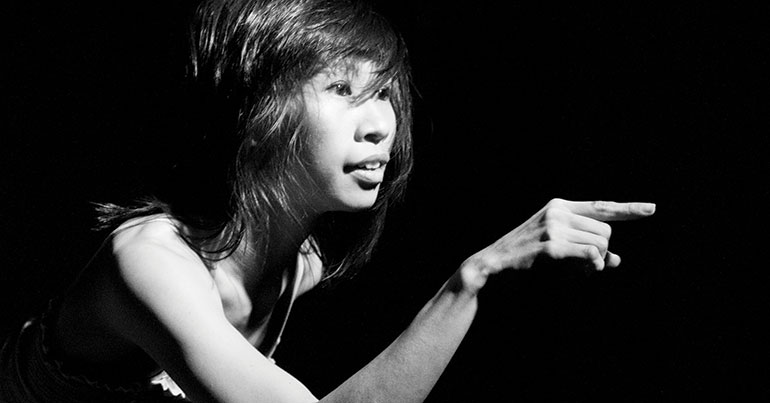Kicking off this month in Singapore is the M1 CONTACT Contemporary Dance Festival featuring DiverCity, a platform supporting the burgeoning local dance community. Singaporean contemporary dancer and choreographer Chiew Peishan is co-creating a bleakly named piece “Should I Kill Myself or Have a Cup of Coffee?” for the festival, inspired by Albert Camus’ theory of the absurd

Tell me about the piece you are choreographing for the festival.
Within the work, we are exploring our response to the philosophy of the absurd by Albert Camus. The philosophy shares and posits that life itself is meaningless – so if we don’t choose suicide as an option, can we continue to find purpose in living a meaningless life?
How do you translate an initial idea into a performance piece?
I think for the creative process between me and our co-creators, so far we have been working with some visual images as a start. The images make us reflect upon the idea of why we are living when all of us know that we are going to die one day. We [then] start to translate and explore our bodily responses to the visual images.
I think some of our challenges are actually to question how much of an illustration of the philosophy we would like to have, as well as [seeing] how much of a creative response to the philosophy we would like to have. After we started our creation process, it made us think that to a certain extent, we are likely to focus more on our responses to the philosophy as [opposed] to illustrating or explaining what this philosophy of the absurd is about.
What is the biggest challenge of choreographing a piece?
I think it would be the translation of conceptual ideas to their physical exploration, to the physicality of the idea in performance itself. And also, for example, how to approach each choreography differently. What are the modes of presentation that I can employ to support the different creations best? For instance, for a particular work, would I only consider the use or exploration of the physical body in space, or would I also be interested to engage other mediums – for example, the use of text [or] the use of the medium of film, to support the translation of the concept?
[manual_related_posts]
What drew you to contemporary dance?
I’m attracted to contemporary dancing because I feel that there is more freedom of expression – it is not confined by certain traditional aesthetics. And also, [there is] more room for play, interdisciplinary-wise. So that’s something that really interests me. It makes me look beyond [to] the bigger understanding of what performance is and understanding the craft itself.
I actually enjoy most the creation process through rehearsals. It’s almost like solving a jigsaw puzzle. You have something – you may not be able to really know [how the] picture [will] arrive at the end, but the process of problem solving, the process of working things out, that excites me a lot as a choreographer.
This article was published in the June 2018 edition of Southeast Asia Globe magazine. For full access, subscribe here.

